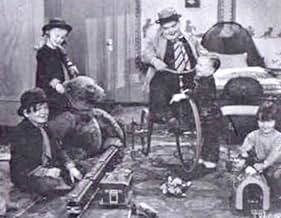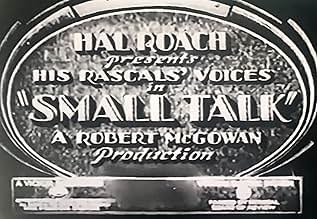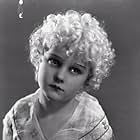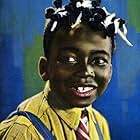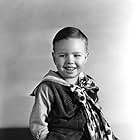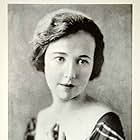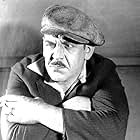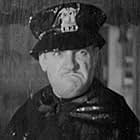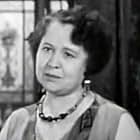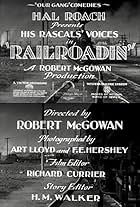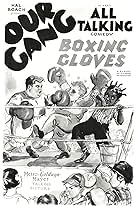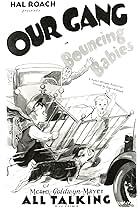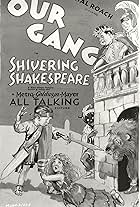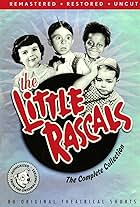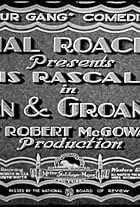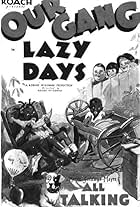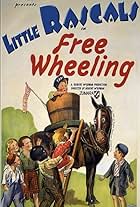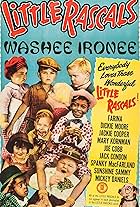The gang is taken from an orphanage & adopted by society matrons.The gang is taken from an orphanage & adopted by society matrons.The gang is taken from an orphanage & adopted by society matrons.
Photos
Jean Darling
- Jean
- (as Hal Roach's Rascals' Voices)
Allen 'Farina' Hoskins
- Farina
- (as Hal Roach's Rascals' Voices)
Bobby 'Wheezer' Hutchins
- Wheezer
- (as Hal Roach's Rascals' Voices)
Mary Ann Jackson
- Mary Ann
- (as Hal Roach's Rascals' Voices)
Harry Spear
- Harry
- (as Hal Roach's Rascals' Voices)
The Wonder Dog Pal
- Pete
- (as Hal Roach's Rascals' Voices)
Symona Boniface
- Miss Eddys Friend
- (uncredited)
Helen Jerome Eddy
- Wheezer's New Mother
- (uncredited)
Mary Emery
- Miss Eddys Friend
- (uncredited)
Edith Fortier
- Domestic
- (uncredited)
Frona Hale
- Miss Eddys Friend
- (uncredited)
Pat Harmon
- Officer in Charge
- (uncredited)
Emmett King
- Doctor
- (uncredited)
Charles McMurphy
- Officer
- (uncredited)
Viola Porter
- Miss Eddys Friend
- (uncredited)
Lyle Tayo
- Mrs. Brown of the Orphan Asylum
- (uncredited)
- Director
- Writers
- All cast & crew
- Production, box office & more at IMDbPro
Storyline
Did you know
- Quotes
Joe: [Wheezer is about to be adopted from the Orphan's Home, and his sister Mary is concerned] Wheezer's gonna get along fine.
Mary Ann: I know he is, Joe, but who's gonna wipe his nose when he catches a cold?
Joe: Aw, he won't catch no cold. He'll sleep in a warm house.
Mary Ann: Well, I wonder if there's someone to sleep with him? He gets awful scared at night, and cries and everything.
Joe: Oh, sure, they'll have a butler to sleep with him. Butlers like to do that.
- ConnectionsFeatured in La bola de cristal: Episode #1.29 (1985)
- SoundtracksComin' Thro' The Rye
(uncredited)
Traditional
Lyrics by Robert Burns
Sung by Marion Talley
Orchestra conducted by Josef A. Pasternack
RCA Victor 1926 recording played on radio
Featured review
With the coming of sound, Hal Roach Studios equipped their stages with sound equipment in early 1929. "Small Talk" probably went before the cameras in March and was released in May, while several previously filmed "Our Gang" silent comedies were still to be issued to theaters.
The story involves Wheezer being adopted by a wealthy woman of society, leaving his sister, Mary Ann, behind at the orphanage. The Gang decide to visit Wheezer, causing their usual brand of chaos and confusion before the happy ending with Pete the Pup singing at the piano.
"Small Talk" is a curio mostly because it is the first "Our Gang" talkie. However, the personalities of the individual members come through, and they give engaging performances. This being an early talkie, the young actors (and the adults, for that matter) have yet to master how to talk naturally on camera; but the kids are so likeable, the stilted dialogue is a minor annoyance.
If you have the Blackhawk video release of this film from 1984, you can see the boom mike stationed above the kitchen table in the opening scenes. Subsequent video releases appear to have been framed differently, and you cannot see the mike. Where to place the microphone in this transitional period was one of the main challenges of the early talkies.
6 out of 10.
The story involves Wheezer being adopted by a wealthy woman of society, leaving his sister, Mary Ann, behind at the orphanage. The Gang decide to visit Wheezer, causing their usual brand of chaos and confusion before the happy ending with Pete the Pup singing at the piano.
"Small Talk" is a curio mostly because it is the first "Our Gang" talkie. However, the personalities of the individual members come through, and they give engaging performances. This being an early talkie, the young actors (and the adults, for that matter) have yet to master how to talk naturally on camera; but the kids are so likeable, the stilted dialogue is a minor annoyance.
If you have the Blackhawk video release of this film from 1984, you can see the boom mike stationed above the kitchen table in the opening scenes. Subsequent video releases appear to have been framed differently, and you cannot see the mike. Where to place the microphone in this transitional period was one of the main challenges of the early talkies.
6 out of 10.
Details
- Runtime25 minutes
- Color
- Aspect ratio
- 1.33 : 1
Contribute to this page
Suggest an edit or add missing content


